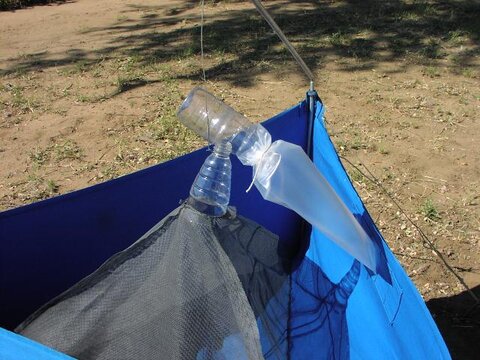There are lots of different types of trap cage. Which is the best design?

One of the most important components of a trap is the cage. If the trap cage is too small in relation to the number of flies caught, the flies will be so crowded that they stop light passing down through the cage and into the top of the netting cone. This will stop the flies transferring efficiently from the trap cone to the cage. Moreover, if there are many flies in the trap they can accumulate at the base, so that they spill over the entrance to the cage, fall to the ground and avoid being recorded in the catches.
One of the difficulties in this is that there is a certain maximum number of flies that can be caught between the emptying of the cages. If this maximum is exceeded before any bait contol begins, the trap catches will decline only when the population has declined substantially, ie, perhaps several months after the bait control has begun. This can lead to confusion about the effectiveness of the campaign.
Using an effective cage that avoids these problems is important. There are many effective designs, but they all share the following features.
Large cages One solution is the use of large cages, to ensure that tsetse and other trapped flies are always an average of centimetre or so apart. However, this can involve cages that are too large for convenience.
Cages with sinks The most satisfactory solution is to kill the flies soon after they enter the cage, using insecticde (see insecticide treatment of ants - above), and arrange for the flies to fall well away from the cage entrance and collect in a sink.
To learn how to make a cage, follow the link on the right.